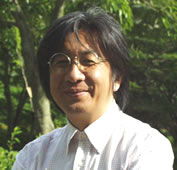
| The BCS Theory of | 
|
|---|---|
| Superconductivity |
J.S. Tsai
Research Fellow
NEC Fundamental and Environmental Research Labs
Dr. Tsai's NEC Profile
Lecture
"Toward Scalable Superconducting Quantum Bits"
Abstract
Realization of practical quantum algorithms requires integration of a large number of quantum bits. By coupling Josephson charge qubits, we have so far demonstrated a conditional gate operation (controlled-NOT) [1]. In this CNOT gate, the coupling was achieved by a fixed electrostatic coupling, and the coupling strength could not be altered in this operation scheme. However, in order to achieve unconditional gate operations, a controllable coupling between qubits is desired. Recently we have succeeded in demonstrating controllable coupling of two flux qubits, coupled via a third qubit [2]. When coupled, it properly functioned as a double controlled-NOT gate; and when decoupled, unconditional 1-bit control was demonstrated. Further more, the coupling scheme has an advantage that the 2-qubit system can be operated at the so called optimal bias point where decoherence is strongly suppressed. In principal, this 2-qubit gate can be viewed as a prototype universal gate of the quantum computer, although many difficult issues still remain unsolved.
[1] T. Yamamoto et al, Nature 425, 941, 2003
[2] Antti O. Niskanen et al, Physical Review B 73, 094506, 2006
A Scientific Symposium
April 12-13, 2007Brown University
Providence, Rhode Island
Support from
the Charles K Colver Lectureship Publication Fundthe Office of the President, Brown University